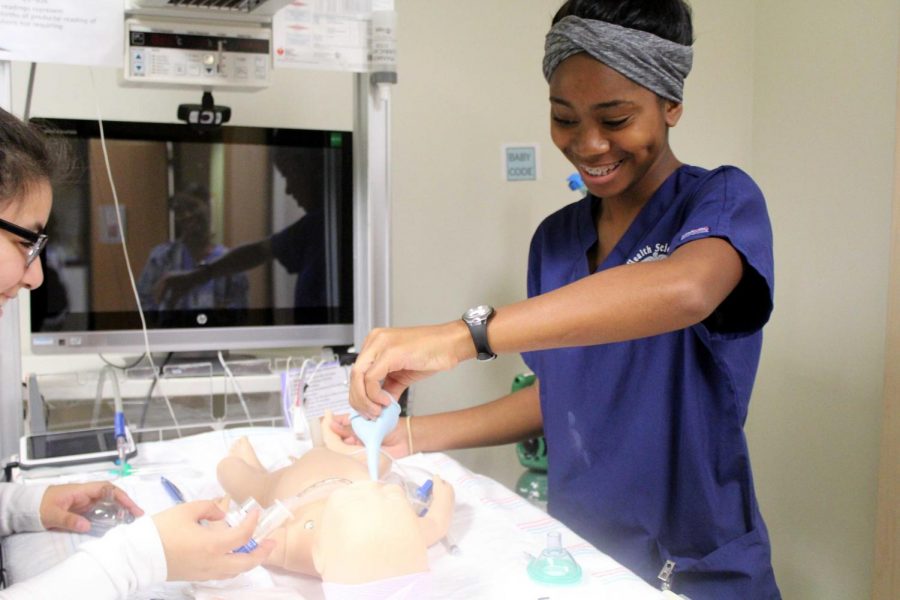Student Expectations Of STAAR Testing
Students will take the STAAR test this upcoming spring, but the overall attitude for this test might be surprising.
November 2, 2016

Freshmen Brianna Orozco is studying and working on her English paper.
Freshmen, sophomores and juniors are preparing to take the state standardized test known as State of Texas Assessments of Academic Readiness or STAAR on March 28, March 30, May 1, May 2, and May 3. This test assesses reading, mathematics, writing, science and social study levels of high school students.
Students will be taking the STAAR test for English I, English II, Biology, Algebra 1 and U.S. History this upcoming spring.

Senior Christopher Garcia may not be taking STAAR this year but still continues to study outside of class.
Most students will take the test in order to receive credit and be promoted to the next grade level. If a student does not pass with a satisfactory grade, the student cannot officially be promoted to the next grade level according to the school counselors.
Students taking the STAAR this year have an assured attitude on taking the test.
Sophomore Hailey Kaplan feels confident that school will have the student ready when testing time comes,
“Well the school’s job is to prepare you for it, so they don’t want everybody failing,“ Kaplan said. She was even confident during her freshmen year after taking two STAAR test, “I feel like it is really overwhelming [freshmen] year, but I did it,” Kaplan said.
Freshmen Thomas Vu has been working hard all year with the help of his teacher. “We have a good teacher and she explains things pretty good,” Vu said.
To prepare for the test, most students stick to keeping up with their class work and doing all their homework. The overall feeling is not of nervousness or anxiety about the test and many are confident that they will pass.
The writing section is arguably one of the harder sections to complete with flying colors. Some students tend to freeze up or draw blanks, so to combat this reaction, the English department has developed an acronym to help students come up with examples for what to write during the writing section. English I teacher Jordan Hill explains how the H.E.L.P. acronym is used.

Freshmen Danny Elizondo, Nicholas Douangchanh and Sydney Ramos study as a group for their English class.
“We encourage kids to come up with a few examples that they know a lot about so whatever essay prompt they get thrown at them, they can fit one of those in,” Hill said. “We use the H.E.L.P. chart. One example comes from history, one from entertainment or current events, one from literature which can be movies as well as books and one from a person, a prominent person from history or in the world now that they can learn a lot about and use as an example.”
Although most students claim not to be too nervous about the test, there are a few reason why a student might not pass the test. They can fail because inadequate sleep, testing anxiety and not taking the test seriously until it is too late. But not to fear, Hill has a few tips to help.
“Calm down enough so you get a good night’s sleep the night before, probably two nights before so you can have some insurance and some sleep banked up in case you are too nervous to sleep the night before,” Hill said.
Another tip is to eat a good breakfast, and it is important that breakfast has plenty of carbohydrates.
“It’s not the time to go low carb because the brain runs on carbs, and protein helps keep that tummy full. You don’t want it growling in the middle of the test and distracting you,” Hill said.


























